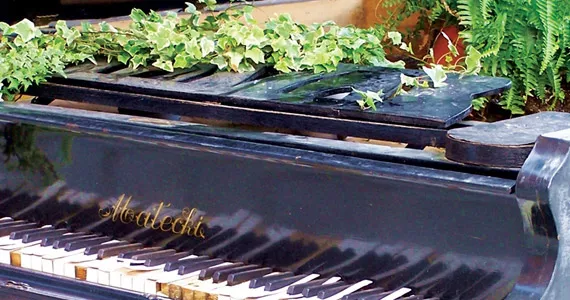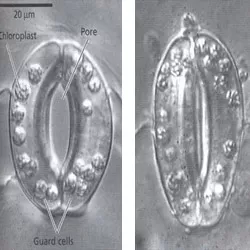Do plants listen to music? How can a plant possibly respond to music? Well, plants breathe through their many mouths, which are also known as stomata and it has been discovered that plant stomata respond to music!
A few years ago, scientists at the University of California, San Diego discovered a signal mechanism that controls a plant’s stomata. The two cells that form the stoma consist of specialized cells (guard cells) that are tuned to the resonant frequency of calcium. When exposed to this frequency the stomata close. However, if the frequency is not exactly right the cells will open again within an hour. This happens even if the concentration of calcium is high enough that the stomata would normally close. Experiments have shown that exposure to high tones was more or less directly responsible for increased gas exchange, and not just after an hour.
Music increases growth
When specific music, high tones or bird songs cause the plant to vibrate, but not at the exact frequency for calcium resonance, the stomata will open after a lapse of time, even though the plant would keep them closed under normal circumstances.
Testing has shown that a leaf fertilizer applied to the plant will have more effect on the development and growth of the plant if its stomata are wide open. This is quite logical, because plants absorb the leaf fertilizer through their stomata. Combinations of frequency and leaf fertilizer are available for many different crops.
There are still some catches to this method. If the stomata are forced to remain open, the plant will not be able to control the amount of water lost through perspiration and so it risks dehydration. As a result exposing your plant to music for over 3 hours a day could endanger its health.

Don’t overdose on music
There could also be negative effects on your favorite plants if the volume or frequency is too high. An effect that cannot yet be explained based on the opening and closing of the stomata. The negative influence of a frequency which is too high could possibly be explained by using a technique known as shell resonance.
Shell Resonance

Besides resonance, which causes stomata to open under the influence of music or specific tones, there is another technique that might be able to explain the effects of music on our plants. This technique is known as shell resonance and it stimulates or inhibits the synthesis of proteins in plants. Various tones have a role to play here. The theory behind this is that proteins, which consist of amino ac- ids, are synthesized in tune to the vibration.
Each amino acid should have its own frequency and therefore, each protein its own range of frequencies. So theoretically, the correct sequence of tones should stimulate the creation of proteins by resonance.
The influence of resonance in the human body is also subject of research. Transcutaneous Electro Neural Stimulation or TENS is a technique that utilizes a specific frequency to stimulate the generation of specific substances in the body. For example, a frequency of 10 Hz is thought to stimulate the creation of the neurotransmitter serotonin (the same frequency as α-waves). And guess what? Serotonin is an amino acid.

The reason that different tones could be such an influence on plants is because hormones, such as auxin, which is one of the substances responsible for cell extension and fruit formation, only consist of two amino acids. Allowing the plant to vibrate just long enough at the frequencies of these two amino acids should increase the production of desirable plant hormones thus resulting in bigger shoots.
Music could also have an influence on seed germination. A publication in the ‘Journal of Alternative and Complementary Medicine’ describes an experiment in which music resulted in a higher germination percentage (P < 0.002) and in faster germination (P < 0.000002). It appears however that sound did not have any significant effect on germination. So it seems here that multiple frequencies are significant and because germination is all about hormones, it is very likely that shell resonance has a role to play here.
Plants Prefer Classical Music...
A possible explanation for plants reacting positively to classical music, and not to heavy metal for instance, is that purer tones are being used in classical music, while heavy metal is full of guitar effects such as distortion and overdrive which we certainly cannot consider pure tones!
Green Ears
Even though techniques to encourage plant growth have been around since the time immemorial, the art itself is dying and present-day growers only have a fraction of the knowledge of their forefathers.
Yet, at the moment it is not exactly clear how music influences the development and growth of plants, but more and more is being discovered about resonance physics and we are closer than ever to solid scientific proof and theories in this area. Maybe, in twenty year’s time people will laugh if you say that plants don’t have ears!



